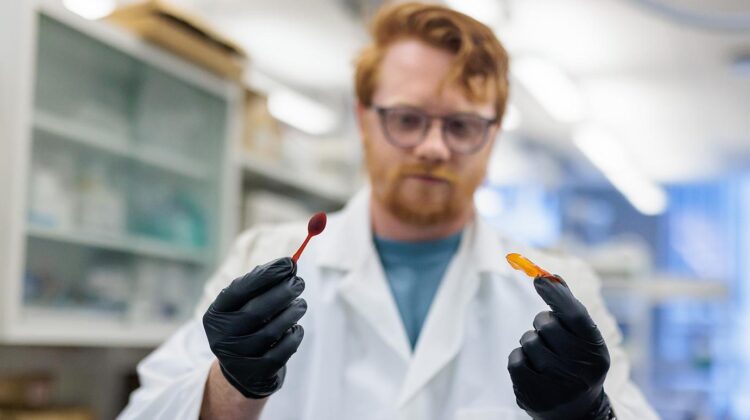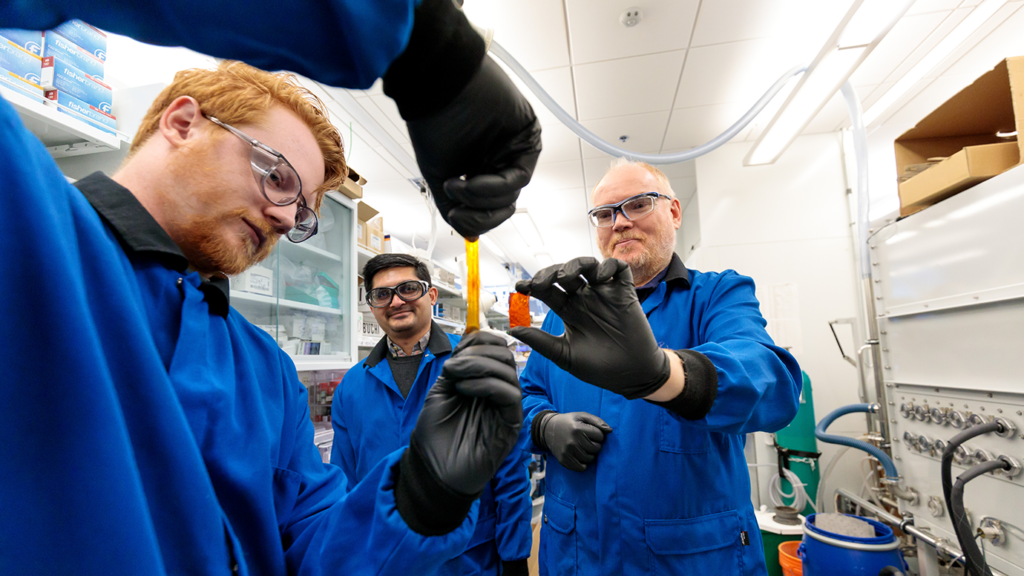
Researchers at the University of Chicago Pritzker School of Molecular Engineering have developed a material, which they called a ‘pluripotent plastic’, that has the ability to take on many forms.
Like pluripotent stem cells, which can give rise to any type of adult cell in the human body, their plastic, can take on many final forms.
‘We believe, this is the first example of a synthetic material that exhibits pluripotent behaviour,’ said Stuart Rowan, the Barry L MacLean professor for molecular engineering innovation and enterprise. ‘We believe that it paves the way toward a different way of thinking in material design.’
To develop the new material, Rowan worked with PME assistant professor Shrayesh Patel, graduate student Nicholas Boynton and colleagues at Argonne National Laboratory, the US Army Research Laboratory, NASA and the National Institute for Standards and Technology.
The pluripotent material is made up of polymers that contain ‘dynamic covalent bonds’ that can break and re-form reversibly. Heating the material to low temperatures (around 60°C) allows the formation of more bonds, resulting in stiff, high-strength materials at room temperature. These could be used to make plastic utensils, among other things.
However, heating to higher temperatures (around 110°C) results in fewer bonds being formed and, in turn, a softer, more extensible material that could potentially be used as a pressure-sensitive adhesive.
‘We were surprised by how many different mechanical properties we could get,’ said Boynton. ‘From this single feedstock material, we can turn it into something that behaves like a hard, high-strength material or something that’s quite flexible, like a rubber band.’

By adjusting the temperature between the two extremes, the researchers showed that they could fine-tune the properties of the materials, giving them a variety of properties and functions. Moreover, the resulting material, although stable at room temperature, could be tempered again at a different temperature to access a new and different state.
‘If you’re going to live on the moon or Mars, you can’t take a bunch of materials with you, and you don’t have Amazon Prime shipping, so it’d be great if you have this one material that you can turn into a bunch of different stuff,’ said Boynton.
In addition to being employed as on-demand reuse materials in resource-scare environments, this work also opens the door to different approaches to plastic recycling, such as removing the need to separate out the different plastics we use today.
The team is now investigating how to improve the range of mechanical properties that can be imbued in their pluripotent materials with the goal of creating materials to replace current plastics as well as materials with new functional properties.
‘We want to reframe the way we think about designing materials,’ said Rowan. ‘Instead of designing one material for one application, let’s flip that on its head and see if we can make one material that can be differentiated to be useful for many applications.’
The research has been published in Science.


